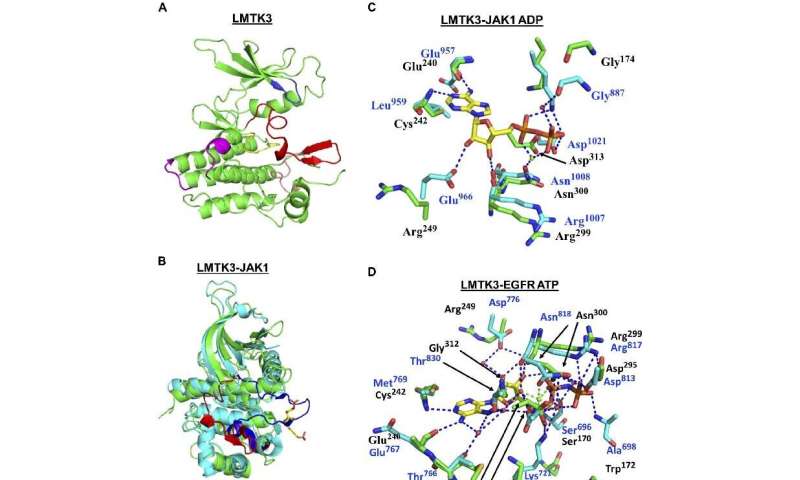
An international study led by scientists at the University of Sussex has provided strong evidence for an effective new target for breast cancer treatment. The five-year study, called “The structure-function relationship of oncogenic LMTK3,” published in Science Advances, involved researchers from seven institutions across three countries including the UK’s Diamond Light Source. It suggests that LMTK3 inhibitors could be effectively used for the treatment of breast cancer, and potentially other types of cancer. The structure of oncogenic LMTK3 (Lemur Tyrosine Kinase 3) determines its role and functions allowing drug inhibition as a new therapeutic strategy
It is hoped the research will allow the further development and optimisation of LMTK3 inhibitors as a new type of orally-administered anticancer drug for patients and have potential value not only for breast cancer patients but also for lung, stomach, thyroid and bladder cancer patients.
LMTK3 is a protein implicated in the development and progression of different malignancies and other diseases (eg. central nervous system related), which is not typically included in commercial kinase screening assays. The research successfully demonstrates that LMTK3 is an active kinase and reports a compound which binds to, and effectively inhibits, this protein resulting in anticancer effects in cells and in breast cancer models in mice.
Georgios Giamas, professor of cancer cell signaling at the University of Sussex, who led the research, says: “By solving the crystal structure of LMTK3, we have demonstrated that it possesses all of the hallmarks of an active protein kinase. LMTK3 plays a pivotal role in controlling cellular processes, and we have previously shown that active LMTK3 makes some cancer treatments (eg. chemotherapy and endocrine therapies) less effective. We are now in the process of taking this research to the next stage by developing LMTK3 specific drugs. We hope that in the next five years we will be undertaking clinical trials, which is incredibly quick for this type of process.”
It is expected that the development of oral LMTK3 inhibitors may have the potential for broad clinical utility, either as a monotherapy, or as a combinational therapy, for example combined with chemotherapy, immunotherapy or endocrine treatments. Consequently, an LMTK3 inhibitor could be used alongside complementary therapies to increase the therapeutic efficacy and help overcome mechanisms of resistance to existing cancer therapies.
The researchers say that the work is a great example of international science collaboration with several groups coming together to help with a challenging project. In particular, the OPPF (Oxford Protein Production Facility) and the UK’s synchrotron, Diamond Light Source, worked with the groups to produce their protein of interest (LMTK3) and to help solve its crystal structure.
Source: Read Full Article
